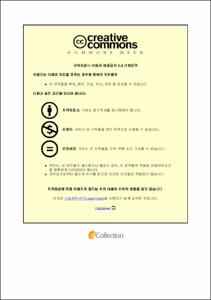수열 및 후속 열변환법으로 합성된 Nb와 W가 codoping된 VO2(M)
- Alternative Title
- Characterization of Nb/W-codoped VO2(M) nanoparticles and their thin films prepared by hydrothermal and post thermal transformation method
- Abstract
- W-, Nb-doped and Nb/W-codped VO2(M) nanoparticles with 1 - 4 at.% doping levels were prepared by the hydrothermal and post thermal transformation of V2O5-H2C2O4-H2O system using ammonium metatungstate and niobium oxalate as W6+ and Nb5+ precursors, respectively . Their phase transition characteristics were comparatively studied with differential scanning calorimetry (DSC) and resistivity measurement. W-doped VO2(M), which was known to have the lowest transition temperature (Tc) with the least amount of doping level, did not show the lowest Tc and the higher doping of W6+ did not guarantee the lowered Tc. We could get only Tc of 47 oC with 4 at. % doping differently from the previously reported. On the contrary, doping of Nb5+ showed the systematic decrease of Tc and Tc reached 21 oC with 4 at. % doping. Since W6+ is much larger than V4+, the structural perturbation seemed to be serious and the reproducibility of structure seems not good in this synthetic method. Therefore relatively smaller Nb5+ seems to be a better dopant than W6+ for lowering Tc and keeping the sharp phase transition. Nb/W-codoping was expected to give synergistic effect in an appropriate doping level. The total 16 codoped samples were prepared with 1 – 4 at. % of W and Nb. In the lower doping level of Nb increasing W level fairly systematically decreased Tc but W doping effect was not shown in the higher doping level of Nb. However, if total doping level is higher than 5 at. %, the phase transition did not substantially occur.
The thin films of these doped VO2(M) were prepared on PET substrate from the wet-coating method of the nanoparticle-dispersion solutions which were prepared by ball-milling. The optical property changes, especially near infrared (N-IR) transmission changes of these thin films due to the phase transition were also comparatively studied. Tc of all these films that were determined from N-IR transmittance change were slightly higher than those that determined from DSC. The N-IR transmittance change of W-doped VO2(M) film by phase transition decreased from 30-40 % to 15-20 % as W-doping increased from 1.0 to 4.0 at.% and Tc decreased only to 55 oC. Unfortunately, Nb-doped VO2(M) films could not prepared in various doping levels because of dispersion problem. Nb/W-codoped VO2(M) film showed better transmittance change and lower Tc than W-doped film in the case of the same total doping level.
- Issued Date
- 2017
- Awarded Date
- 2017. 8
- Type
- Dissertation
- Publisher
- 부경대학교
- Alternative Author(s)
- Jongmin Kim
- Affiliation
- 부경대학교 대학원
- Department
- 대학원 화학과
- Advisor
- 김영일
- Table Of Contents
- I. Introduction 1
II. Experimental 14
1. Materials 14
2. Instrumentation 15
3. Synthesis of VO2(M) nanoparticles 17
4. Preparation of VO2(M) thin film 18
III. Results and discussion 20
1. Optimization of the transformation of VO2(B) to VO2(M) 20
2. Characteristics of singly doped VO2(M) nanoparticles by W and Nb 32
2.1. W-doped VO2(M) 32
2.2. Nb-doped VO2(M) 39
3. Characteristics of Nb/W-codoped VO2(M) nanoparticles 45
4. Thermochromic characteristics of doped VO2(M) thin films 57
IV. Conclusion 68
V. References 72
- Degree
- Master
- Files in This Item:
-
-
Download
 수열 및 후속 열변환법으로 합성된 Nb와 W가 codoping된 VO2(M).pdf
기타 데이터 / 4.67 MB / Adobe PDF
수열 및 후속 열변환법으로 합성된 Nb와 W가 codoping된 VO2(M).pdf
기타 데이터 / 4.67 MB / Adobe PDF
-
Items in Repository are protected by copyright, with all rights reserved, unless otherwise indicated.